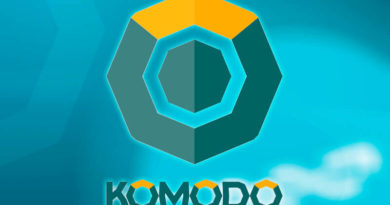Cosmos (ATOM): Bridging the Gap in Blockchain Connectivity
Over $50 billion in combined market value now flows through the Cosmos ecosystem. This is much more than Polygon’s $5.6 billion. It shows Cosmos is a leader in blockchain interoperability.
Blockchain technology has changed many industries. But most networks are isolated “silos.” Cosmos (ATOM) changes this with its Inter-Blockchain Communication (IBC) protocol. It allows secure cross-chain transfers.
Its Hub-and-Zones architecture lets different blockchains work together. For example, the Akash Network for cloud computing can operate with its own rules. Yet, they stay connected.
ATOM is the native token of the Cosmos Hub. It fuels the network. The proof-of-stake mechanism secures transactions at 10,000 per second. This is faster than many rivals.
Developers use the Cosmos SDK to build custom blockchains. They don’t have to start from scratch. The ecosystem has 49 Zones, showing its scalability.
Despite its growth, ATOM is volatile. Its market cap hit $2.5 billion in late 2023. But there are risks. Projects like dYdX’s planned move to Cosmos show growing trust in its infrastructure. It’s seen as a backbone for Web3’s future.
Key Takeaways
- Cosmos’ IBC protocol enables secure cross-chain transactions between over 49 independent Zones.
- Its ecosystem surpasses $50 billion in combined market cap, outpacing Polygon’s $5.6 billion.
- ATOM’s Tendermint engine processes 10,000+ transactions per second with one-second finality.
- Decentralized finance platforms like dYdX are adopting Cosmos to leverage its interoperability.
- Investors face high volatility, with ATOM’s inflation rate ranging from 7% to 20% based on staking activity.
Understanding the Blockchain Interoperability Challenge
Today, blockchain networks are like isolated islands, each with its own rules. This makes it hard to share data and assets.
Blockchain Silos Stifle Progress
Imagine apps on Ethereum can’t talk to Solana or Polkadot. This is our current blockchain world. Developers work hard but can’t share resources, leading to less user adoption. Vitalik Buterin said in 2022:
“Interoperability isn’t just nice-to-have—it’s critical for Web3 adoption.”
Why Cross-Chain Communication Matters
- Unlocks $450B+ in stranded liquidity across isolated chains
- Enables seamless DeFi apps spanning multiple networks
- Reduces security risks of centralized cross-chain bridges
Early Solutions Fell Short
| Year | Method | Limitation |
|---|---|---|
| 2013-2017 | Atomic swaps | Required manual coordination |
| 2017-2020 | Cross-chain bridges | Centralized trust requirements |
| 2020-2022 | Message protocols | Complexity for end-users |
Early tries at interoperability didn’t work. Bridges like Wrapped Bitcoin needed manual steps. Polkadot’s auctions and Avalanche’s subnets also had issues. Cosmos’s IBC protocol later changed the game, showing a new way forward.
What is Cosmos (ATOM) and How Does it Work?
Cosmos Network dreams of a world where blockchains work like websites on the internet. It aims to break down barriers, letting different blockchains talk and share data freely.
The Internet of Blockchains Vision
The Cosmos Network has a bold plan for blockchain connections. It’s called the “Internet of Blockchains.” This setup lets special blockchains (Zones) link up through central Hubs. This way, new ideas can grow without needing one big chain.
Today, over 249 apps and services use this system. They work on 50+ chains, like Osmosis and Injective, thanks to IBC.
Core Components of the Cosmos Network
| Component | Description |
|---|---|
| Hub | Central relay connecting Zones, managed by ATOM token holders |
| Zones | Independent blockchains like Ethereum or Binance Chain that connect via IBC |
| IBC Protocol | Enables atomic swaps and data transfer between chains with cryptographic guarantees |
The Cosmos Network is kept safe by 180 active validators. They use Tendermint consensus to make sure everything is final in seconds. By 2024, over 200 more projects are expected to join.
The Role of ATOM in the Ecosystem
- Staking: 67.9% of ATOM tokens are staked, securing network operations
- Governance: ATOM holders vote on protocol upgrades and validator penalties
- Gas Fees: Low transaction costs compared to Ethereum or Solana
ATOM’s supply has grown from 236 million to 292 million due to annual 7% inflation. Validators can face up to 5% slashing penalties for bad behavior. This keeps the network safe and sound.
The Technical Architecture Behind Cosmos
Cosmos’s tech foundation changes how we think about blockchain design. It uses a modular architecture, unlike big, single networks. It breaks down into three main parts: consensus, networking, and app logic.
This design lets developers work on apps without worrying about the basics. It’s like building with blocks, where each block has its own job.

- Consensus Layer: Powered by Tendermint, it ensures block finalization in 7 seconds with 100% certainty.
- Application Layer: The Cosmos SDK offers pre-built modules for core functions, cutting development time by 50% or more.
- Interconnection Layer: The Inter-Blockchain Communication (IBC) protocol enables secure cross-chain data transfers between zones.
| Component | Purpose | Key Metric |
|---|---|---|
| Tendermint | Consensus engine | Finalizes blocks in seconds |
| ABCI | Interface for app development | Supports 10+ programming languages |
| Cosmos SDK | Framework for zone creation | Used by 400+ active projects |
The heart of the blockchain ecosystem is the Application Blockchain Interface (ABCI). It lets developers write apps in Go, Rust, or C++. The Cosmos Hub is the central hub, linking zones that have their own rules.
This setup lets zones handle 1,500+ transactions per second. It keeps things secure through Interchain Security. This method lets new chains use validator networks from other chains for protection.
Tendermint Consensus: The Foundation of Cosmos
Tendermint’s consensus algorithm is key to Cosmos, solving the blockchain interoperability puzzle. It ensures reliability by using Byzantine Fault Tolerance (BFT). This keeps the network in agreement, even when nodes fail or act maliciously.
Byzantine Fault Tolerance Explained
BFT means nodes agree, even with faulty ones. Tendermint’s BFT model needs a two-thirds majority for decisions. This innovation, started in 2014, solved big challenges in distributed systems.
Vitalik Buterin and Jae Kwon worked together early on. They laid the foundation for Tendermint’s secure model.
Benefits of Tendermint’s Proof-of-Stake
Tendermint’s PoS is better than energy-heavy Proof-of-Work. It uses less energy and is more secure. Validators stake ATOM tokens, which encourages honest behavior.
A $20M venture fund in 2021 helped improve Tendermint’s consensus engine. This ensures ongoing development.
How Tendermint Enables Fast Finality
Tendermint makes transactions final in seconds. This means transactions can’t be reversed once confirmed. It’s fast, unlike Ethereum’s 12–15 minutes.
This speed is crucial for real-time DeFi and IBC transactions. It makes Tendermint perfect for these needs.
| Feature | Description | Benefit |
|---|---|---|
| BFT | Guards against node failures/malice | Uninterrupted network operation |
| Fast Finality | Blocks finalize in seconds | Instant cross-chain usability |
| Energy Efficiency | PoS reduces energy use 99.9% vs Bitcoin | Sustainable scaling |
Tendermint keeps Cosmos at the forefront of interoperable blockchain ecosystems.
The Inter-Blockchain Communication Protocol (IBC)
Cosmos’ IBC protocol makes blockchain interoperability possible. It lets different blockchains talk to each other smoothly. Now, over 100 chains are connected, thanks to IBC.
IBC has seen a 102% growth in adoption. It’s supported by 124 developers and has been safe for two years. This means assets and data can move freely between networks like Bitcoin and Ethereum, without needing third-party bridges.
IBC uses standardized protocols for different types of transactions. For example, ICS-20 for tokens and ICS-721 for NFTs. It has a four-step handshake to make sure data is secure.
The Transport Layer takes care of sending packets. The Application Layer lets developers create custom apps. Building cross-chain dApps is easier with Cosmos SDK tools.
- Light clients verify other blockchains’ states without downloading full data
- Proof verification ensures no single point of failure
- Malicious relayers can’t alter data due to cryptographic proofs
IBC needs 2/3 of validators to agree on block validity. This keeps the system secure, even when faced with attacks.
IBC powers decentralized exchanges like Osmosis. It lets users swap assets between Cosmos, Ethereum, and Solana. Gaming platforms use ICS-721 to move NFTs between chains.
DeFi protocols use IBC for cross-chain yield farming. Over 100 projects now use IBC for features like cross-chain oracles and atomic swaps.
Cosmos SDK: Building Custom Blockchains
Developers with the Cosmos SDK can create blockchains that meet their exact needs. This tool offers pre-built modules for key functions like staking, governance, and token transfers. This saves time and keeps the blockchain compatible with the Cosmos ecosystem.
It’s built with Go (Golang) and needs Go 1.19+ for compatibility with current coding standards.
The Cosmos SDK’s design lets teams pick and choose components. The Ignite CLI makes setup easier, and the Tendermint consensus engine keeps the network secure. The SDK also has testing tools to help developers confidently deploy their work.
Key features include:
- Customizable blockchain creation with app-specific logic
- IBC integration for seamless cross-chain transfers
- Version compatibility tracking via module matrices
Here’s a snapshot of core module compatibility:
| Module | Compatibility |
|---|---|
| cosmossdk.io/x/bank | 0.2.z (earlier: X) |
| cosmossdk.io/x/gov | 0.2.z (earlier: X) |
| cosmossdk.io/x/staking | 0.2.z (earlier: X) |
| cosmossdk.io/x/nft | 0.2.z, 0.1.z |
Real-world examples like the Cosmos Hub’s Gaia implementation show the SDK’s flexibility. Teams use modular components to build AppChains that are fast and cost-effective. The SDK is getting even better with v2, making it easier for innovation in blockchain.
ATOM Tokenomics and Investment Considerations
ATOM’s value goes beyond its technical aspects. It’s the native token of the Cosmos network, playing key roles in governance, security, and transactions. Investors need to consider how these roles impact ecosystem growth and market trends.
ATOM’s Utility and Value Proposition
- ATOM holders govern protocol upgrades and network changes through decentralized voting.
- Staking secures the network and rewards participants with inflationary tokens and transaction fees.
- Transaction fees paid in ATOM directly reduce circulating supply, creating scarcity incentives.
Staking Rewards and Inflation
Current annual inflation targets 10% to fund rewards, with ~70% of new tokens allocated to stakers. When 70% of tokens are bonded, inflation drops to 7%. Recent proposals aim to cap minimum inflation at 0% to stabilize rewards during high staking rates. Annual security payments from the network total $220 million, boosting token demand.
Price History and Market Performance
Since its 2019 launch, ATom has shown volatility. Its 2021 peak hit $44.70 before dipping to $1.13 in 2020. Current price: $7.06, market cap $2.07B. Analysts predict:
- Wallet Investor: 2025 price range $5.45-$10.77
- DigitalCoinPrice: $15.61 by end-2023 and $26.29 by 2025
- Bullish scenarios: $16.31 at $3T crypto market cap, $54.39 at $10T
Historical data shows staking rewards and ecosystem adoption impact price movements. Investors should watch IBC adoption rates and ATom’s role in cross-chain transactions.
Major Projects and Applications in the Cosmos Ecosystem
The Cosmos ecosystem is a hub for new ideas. It supports everything from finance to big business solutions. Its ability to connect different systems makes it useful in many areas.
DeFi Platforms Built on Cosmos
Decentralized finance is big in Cosmos. Osmosis, the top DEX, lets users swap tokens on 30+ chains. It has a TVL over $1 billion. Stride makes staking easier with liquid staking. Injective offers safe trading with new protocols.
These examples show how Cosmos is great for decentralized finance ideas.
NFT and Gaming Applications
- Pylons lets creators earn from NFTs with shared revenue.
- HIBLOCKS links social media with its HIBS token, adding value.
- Secret Network uses smart contracts for private NFT deals.
Enterprise Solutions Using Cosmos Technology
Big companies use Cosmos for growth. Akash Network saves 90% on cloud costs by using idle power. Fetch.AI uses $150M to build smart agents for logistics and data. Band Protocol secures data for over 100 projects.
Cosmos supports finance, gaming, and business. It’s key for linking blockchain systems together.
Comparing Cosmos to Other Interoperability Solutions

Cosmos (ATOM) is a leader in interoperability thanks to its modular design. Unlike Polkadot and Ethereum 2.0, which use centralized hubs or layer-2 solutions, Cosmos lets sovereign blockchains talk directly to each other. This way, it avoids the single points of failure seen in other bridging systems.
- Polkadot needs parachain auctions and shared security, which limits flexibility
- Ethereum’s rollups focus on scaling, not true cross-chain interoperability
- Bridge protocols often get hacked because of complex smart contracts
Cosmos’ IBC protocol makes moving assets between zones easy and fast, without needing intermediaries. Its hub-and-zone setup lets networks keep their independence, unlike Polkadot’s unified ledger model. With over 442 million ATOM tokens in use, developers trust this approach.
Here are some key performance points:
- SDK makes setting up blockchain much faster, from months to weeks
- IBC can handle over 10,000 transactions per second, way more than Ethereum’s 30
- No central authority controls how zones interact
While Polkadot uses auctions and Ethereum focuses on layer-2 scaling, Cosmos puts sovereignty and speed first. Its IBC protocol is unmatched in allowing trustless communication between independent blockchains. As more ecosystems grow, Cosmos stands out as a key part of the multichain future.
The Future Roadmap of Cosmos Network
The Cosmos Network is moving forward with a clear plan. It aims to become a key player in blockchain connections. It will focus on technical improvements, growing its ecosystem, and solving problems.
Upcoming Technical Developments
- Atomic IBC launches in 2024, enabling cross-chain transactions that execute simultaneously across multiple chains.
- IBC routing reduces relayer costs by routing data through the Cosmos Hub, set to debut next year.
- Protocol-owned liquidity and liquid staking modules will boost ATOM token utility, letting stakers use collateral in DeFi apps.
Ecosystem Expansion Plans
The Cosmos Network wants to grow its Atom Economic Zone (AEZ). It already includes Neutron and Stride. It plans to add more to the ecosystem through:
- Developer grants and partnerships to attract new projects.
- Biweekly testnet events (Testnet Wednesdays) and three-phase release testing.
- Monthly software updates to ensure rapid iteration and security improvements.
Potential Challenges and Solutions
Despite progress, challenges like regulatory uncertainty and technical complexity remain. Solutions include:
- Third-party audits of major updates, like the recent SDK 47 upgrade.
- Public consultations (e.g., September 20, 2023 call) to gather stakeholder input.
- Interchain Security (ICS) for AEZ chains, leveraging the Cosmos Hub’s $2.3B TVL for security.
Stakeholders can submit feedback via the official form before October 1, 2023. This ensures the roadmap meets community needs.
Conclusion: Cosmos as a Cornerstone of Blockchain’s Multichain Future
Cosmos (ATOM) is leading the way in solving blockchain’s problem of being split. It uses a special setup called Tendermint and IBC protocol for safe communication between blockchains. This setup lets different blockchains work together while keeping their own rules.
Already, Cosmos has helped over 272 projects and handled more than $60 billion in digital assets. This shows it’s not just theory but works in real life.
The Cosmos world is growing with new partnerships. Sei, dYdX, and Polymer are working with Cosmos. They’re making progress in finance, gaming, and business solutions. With over 50 appchains and easy asset transfers, Cosmos is showing us a connected future.
The ATOM token is key for making decisions and earning interest (7-12% annually). This makes Cosmos valuable in the crypto world.
ATOM hit a high of $44.70 in 2021, showing people believe in it. Today, it has a $3.5 billion market cap and a $9 price. Experts think it will keep growing, maybe even to $2,960 by 2040.
Cosmos’ design and IBC protocol are changing how blockchains talk to each other. It’s making networks like Tendermint, which are safe and don’t waste energy. As more projects join, like Picasso and Stride, Cosmos will keep shaping the future of crypto.




